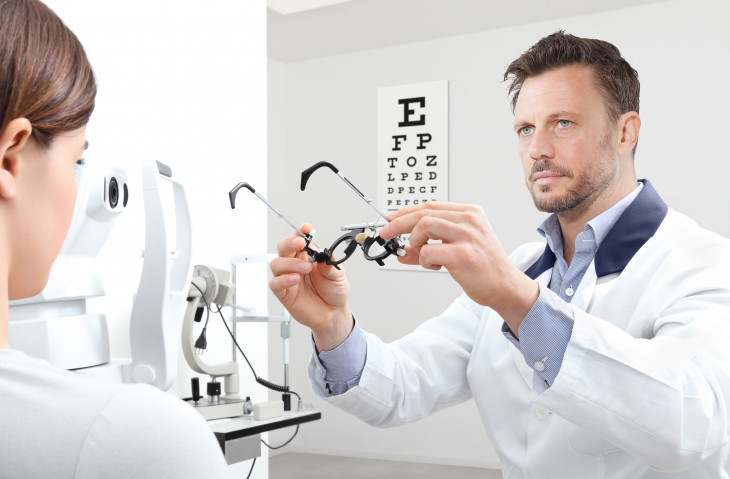Understanding the Function of Your Eye Doctor in Maintaining Vision
Understanding the Function of Your Eye Doctor in Maintaining Vision
Blog Article
Checking Out the current Technical Developments in Optometry and What They Mean for Optometrists
From the accuracy of Optical Comprehensibility Tomography to the nuanced understandings used by AI-driven analysis devices, these developments are establishing brand-new standards in individual analysis and treatment. As these improvements penetrate the practice, optometrists are faced with the obstacle of welcoming these tools to enhance individual outcomes.
Developments in Diagnostic Devices
Advancing the area of optometry, technologies in diagnostic tools have actually reinvented the way eye care specialists assess and identify ocular problems and aesthetic impairments. The previous decade has actually seen significant technological advancements, enabling even more thorough and exact examinations. Optical Coherence Tomography (OCT), as an example, supplies high-resolution cross-sectional pictures of the retina, enabling for the very early discovery of conditions such as glaucoma and age-related macular degeneration. This non-invasive imaging technique has come to be important in modern optometric practice.
One more secret innovation is the intro of innovative corneal topography systems, which map the surface curvature of the cornea with accuracy. These devices are specifically beneficial for suitable get in touch with lenses and detecting corneal conditions. Electronic retinal imaging has changed standard ophthalmoscopy, providing detailed, breathtaking sights of the retina that promote thorough aesthetic evaluations.
The development of wavefront aberrometry has also been critical, enabling the evaluation of refractive errors with unmatched precision (Optometrist Chino). This technology assists in customizing corrective lenses and enhancing surgical end results for refractive surgical procedures. Collectively, these analysis advancements encourage optometrists to deliver exceptional individual treatment, ensuring very early treatment and customized therapy methods, ultimately boosting aesthetic wellness outcomes
AI in Person Management
Building on the structure of innovative analysis tools, the unification of fabricated knowledge (AI) in individual administration represents a transformative jump for optometry. AI systems are significantly employed to boost efficiency, accuracy, and personalization in patient treatment.
Additionally, AI-driven systems promote structured individual interactions and management processes. Automated organizing, virtual consultations, and personalized follow-up strategies not only improve individual complete satisfaction yet also enhance time management for experts. These systems can triage clients based upon the seriousness of their conditions, making sure that those in crucial demand receive prompt attention.
Moreover, AI boosts decision-making by providing eye doctors with evidence-based suggestions and therapy pathways. By incorporating data from digital health and wellness documents, AI tools supply insights that inform medical decisions, lowering the risk of mistakes and enhancing person results. As AI remains to evolve, its function in individual monitoring will likely increase, reshaping the landscape of optometric care.
Breakthroughs in Retinal Imaging
In the realm of optometry, retinal imaging has actually observed remarkable technological advancements that are enhancing analysis abilities and client treatment. Developments such as Optical Comprehensibility Tomography (OCT) and fundus photography have actually revolutionized exactly how optometrists picture and evaluate the retina.
Enhanced imaging modalities like OCT angiography are additional refining diagnostic precision. Eye Doctor. Such innovations help with the recognition of min retinal modifications that can symbolize disease development.
Furthermore, developments in synthetic intelligence are augmenting retinal imaging by enabling automatic evaluation of big datasets. These systems help optometrists in recognizing patterns a measure of pathology, thus improving analysis precision and performance. Jointly, these innovations are transforming retinal imaging into a foundation of modern-day eye care, improving outcomes and broadening restorative opportunities.
Teleoptometry's Growing Role
Teleoptometry is increasingly ending up being a crucial component of eye care, driven by developments in electronic communication and analysis devices. This is specifically advantageous in underserved and rural locations where accessibility to specialized eye browse around this web-site care is often restricted.
The assimilation of expert system (AI) further improves teleoptometry, allowing the analysis of aesthetic data and assisting in the detection of eye problems such as glaucoma and diabetic person retinopathy. AI-powered formulas can rapidly analyze complicated imaging information, giving optometrists with important insights that strengthen professional decision-making.
Additionally, teleoptometry supports continuity of care through smooth integration with electronic health records (EHRs), permitting eye doctors to maintain thorough patient backgrounds. This guarantees that patients obtain consistent and customized treatment even when consulting with various professionals.
Despite these benefits, obstacles stay, consisting of making certain information safety and handling person expectations. Teleoptometry represents a significant stride towards even more accessible, reliable, and patient-centered eye care. As innovation develops, its function is positioned to broaden additionally.

Future Trends in Eye Care
A myriad of ingenious fads is set to improve the future of eye care, driven by technological developments and the progressing demands of patients. One significant pattern is the assimilation of artificial intelligence (AI) in diagnostics, which promises to enhance the precision and efficiency of eye evaluations. AI algorithms can examine vast amounts of information from retinal images, possibly spotting problems like diabetic retinopathy and glaucoma earlier than typical techniques.
Moreover, personalized medication is acquiring traction in optometry, with genetic testing notifying personalized treatment plans. This strategy intends to maximize patient results by customizing treatments to specific hereditary profiles. Wearable modern technology, such as wise contact lenses, is additionally imminent, providing real-time surveillance of intraocular pressure or sugar degrees, therefore providing continual understandings into systemic and eye health and wellness.
The fostering of augmented fact (AR) and virtual reality (VR) in training and individual education is another emerging fad. These modern technologies offer immersive experiences that can boost understanding and skills both for patients and eye doctors. As these patterns progress, eye doctors must remain abreast of technological advancements to supply advanced treatment, guaranteeing better client outcomes and satisfaction in the vibrant landscape of eye care.
Final Thought

Jointly, these analysis developments empower eye doctors to supply remarkable individual care, guaranteeing very early treatment and tailored therapy approaches, inevitably enhancing aesthetic wellness outcomes.

As these innovations proceed to develop, optometrists should adjust and integrate them right into method, ultimately enhancing operations effectiveness and boosting the standard of eye care provided to people.
Report this page